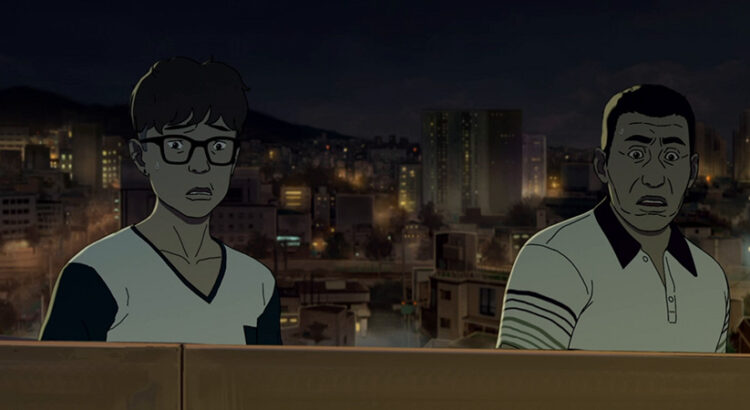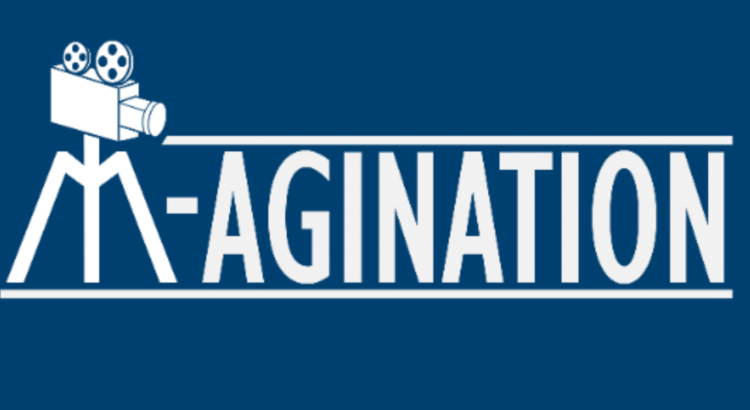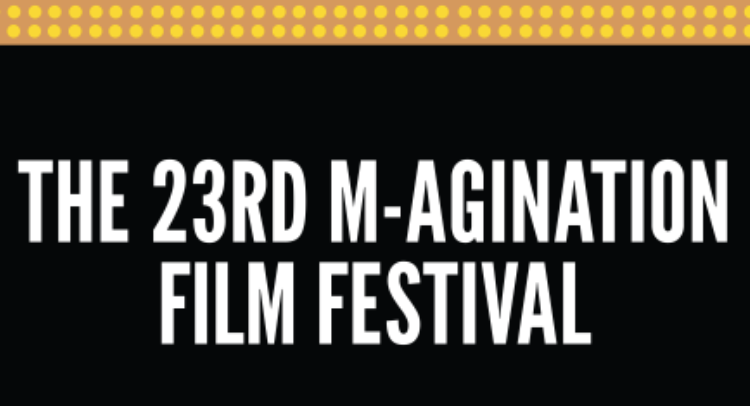*Played at the State Theatre on October 6th and 12th*
Despite being produced in the same year and by the same director, Seoul Station (2016) is the lesser-known prequel to the famous movie Train to Busan (2016). Interestingly enough, Seoul Station is an animation whereas the latter is a live-action film. The director Yeon Sang-ho is well known for his brutal stories, and while I haven’t seen Train to Busan yet, Seoul Station certainly did an excellent job of portraying not only the brutality of a zombie apocalypse but also the social disparities between income classes, especially emphasizing the discrimination against the homeless community.
There were three main characters: Hye-Sun, her boyfriend Suk-gyu, and her father Ki-woong (in the featured image, Suk-gyu is on the left and Ki-Woong is on the right). Like a typical zombie movie, the plot revolved around survival. However, Hye-Sun and Suk-Gyu were in the lower class and that was already enough of a struggle before being further exacerbated once hell broke loose. To me, what was most interesting wasn’t their endeavors to live, but rather the humorous character dynamics and the focus on economic differences, which I felt to be the true horror highlighted by the writers. The wealthy were rarely, if not never, featured.
In Seoul Station the color palette was very grim and muted; even the bright pink of Hye-Sun’s dress appeared gray. I enjoy watching animated films, but I haven’t seen many Korean ones. The character designs were realistic and diverse, which I felt made the animation pop due to their facial expressions. The voice acting hit differently, too, because the characters had similar voices to people I know. However, the animation itself didn’t flow as smoothly as I expected. In the beginning, it felt clunky, but I quickly adjusted and didn’t pay much attention to it afterward. My favorite part was the incredible plot twists, which were so shocking I couldn’t stop talking about it with my friends after. In fact, a majority of the audience gasped at one specific scene and the excitement rose in the theater.
I heard from others that although it’s meant to be a prequel, the two movies are surprisingly disconnected from each other. It apparently didn’t add much to the storyline of Train to Busan and would’ve been normal to be a separate world. Since I haven’t seen Train to Busan I unfortunately can’t compare the two very well, but I’ve always wanted to watch it. I’m excited to see more of Yeon Sang-ho’s work, especially since it’s such a praised movie. If you’re looking for a funny horror movie that also implies a deeper meaning, I recommend Seoul Station! It’s a shorter movie, around an hour and a half, so it’d be a good film to engross in during a busy time like midterm season!







